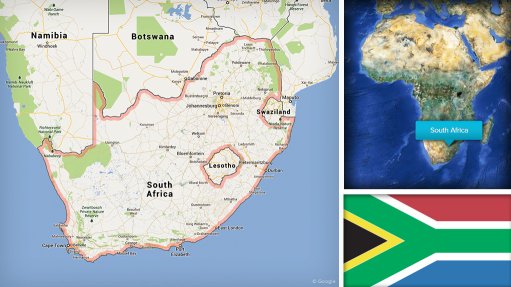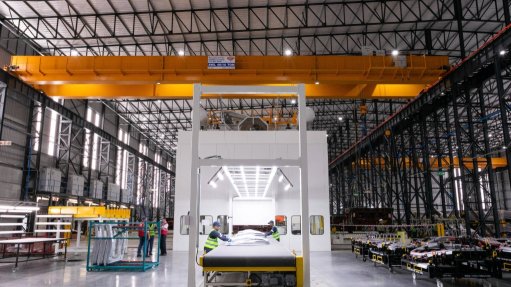Commentators praise MTBPS fiscal discipline, moving expenditure to investment
Various business organisations and economists have praised the 2025 Medium-Term Budget Policy Statement (MTBPS), delivered by Finance Minister Enoch Godongwana on November 12, for maintaining fiscal discipline and aiming to reduce the budget deficit, but warned the dysfunction of local municipalities posed a threat to sustainable, inclusive economic growth.
Municipal dysfunction has increased the cost of living for households and of doing business, which hampers the expansion of both small and large businesses. Greater intervention to address these persistent failures is necessary, said industry organisation the Banking Association South Africa (Basa).
“The announcement of an inflation target of 3% provides policy certainty, strengthens the country’s macroeconomic outlook and tackles the increasing cost of living that hits the most vulnerable the hardest.”
The MTBPS showed incremental, but confidence boosting, progress on key economic and fiscal indicators. The challenge now was to sustainably increase the rate of structural reform, Basa said.
South Africa needed to focus on speeding up the economic reforms that had resulted in incremental improvements in the country’s fiscal health and economic growth prospects.
Despite the marginally better GDP growth projections, at an average of 1.8% over the next three years, South Africa’s economic growth prospects were far below what the country needed, it said.
The policy reforms that have resulted in improved performance, and will facilitate further investment in power, logistics and other economic infrastructure, should provide an important boost to business and investor confidence.
The introduction of a procurement dashboard was another important move towards the transparency necessary to reduce corruption in the public and private sector, Basa stated.
North-West University Business School economist Professor Raymond Parsons said the broad economic and fiscal strategies outlined in the 2025 MTBPS are realistic and credible given South Africa’s challenging economic context.
“The MTBPS represents a visible turning point in advancing the priorities of a stable, growing, competitive and inclusive economy,” he said.
“Policy continues to gradually move in the right direction to build resilience, create fiscal buffers, and stabilise public indebtedness amid adverse global headwinds.”
The decision to implement a 3% inflation target with a one percentage point tolerance band over two years represents a significant shift in South Africa’s monetary policy, but is a flexible framework.
While it strengthens policy credibility and aligns with the goal of lower inflation expectations, it also entails short-term fiscal and growth trade-offs, Parsons noted.
The overarching message of the MTBPS is that accelerated structural reforms remain the most effective pathway to much higher, job-rich growth.
Implementation will be key, including ensuring that reform commitments under Operation Vulindlela and other processes translate into tangible improvements in confidence, investment and service delivery, he said.
Financial services firm Nedbank highlighted that spending growth in the 2025/26 financial year was expected to exceed the May Budget projection, owing to an additional R15.8-billion allocation for the contingency reserve, rollovers from 2024, and unforeseen and unavoidable expenditures.
Over the next three years, expenditure was estimated to increase by 3.4% a year and debt service costs are projected to rise by 3.8% a year. Treasury had capped the increase in employee compensation at around 4%, it said.
Meanwhile, payments for capital assets were budgeted to increase by 7.3% a year, thereby becoming the fastest-growing expenditure item, the bank pointed out.
“The MTBPS shows some progress in fiscal consolidation over the medium-term expenditure framework (MTEF). The budget deficit narrows to just below 3% of GDP by the final year of the MTEF, buoyed by faster revenue growth and a slower increase in expenditure primarily owing to lower debt service costs and historically low increases in the wage bill,” Nedbank said.
However, the sharp rise in maturing loans poses refinancing risks, as a deterioration in local and/or global market conditions could make it difficult for Treasury to meet its debt obligations.
Further the confirmation of the lower inflation target was also welcome, bringing certainty to monetary policy and alleviating signs of tension between Treasury and the South African Reserve Bank.
“The finalisation of the policy on the fiscal anchor will help remove the uncertainty that has historically been caused by expenditure increases that have been unrelated to changes in revenue.
“The numbers presented in the MTBPS 2025 are encouraging, confirming Treasury's commitment to reducing the budget deficit and containing the rise in public debt.
“However, execution risk remains high. Disappointments on the growth front will hurt revenue growth and result in a weaker fiscal trajectory,” it warned.
Business organisation Business Leadership South Africa (BLSA) CEO Busi Mavuso said the MTBPS was the culmination of painful decisions where the government had stuck to the fiscal path in the face of immense pressure to increase expenditure.
In his MTBPS speech, Godongwana noted that “this is the first time since the 2008 financial crisis that public debt will not grow as a percentage of GDP”.
These words were profoundly significant for the country’s economic prospects, Mavuso said.
Godongwana outlined a clear fiscal pathway aimed at stabilising and then reducing public debt over the medium term, with government debt stabilising in 2025/26 at 77.9% of GDP.
This, along with achieving a primary budget surplus, has positive implications for the country’s credit ratings, she said.
Additionally, debt-service costs for this fiscal year will be R4.8-billion lower than estimated in the 2025 Budget, supported by lower interest rates, lower inflation and a stronger currency.
As a share of revenue, National Treasury projects that debt-service costs will peak at 21.4% in 2025/26 and decline steadily thereafter, Mavuso noted.
Godongwana said that “since 2008, spending has consistently exceeded revenue, driving up debt and debt-service costs. These costs crowded out spending on critical services and exerted pressure on lending rates across the economy. But we are now turning this around”.
Further, he said government would soon launch a new infrastructure bond to raise at least R15-billion for the Budget Facility for Infrastructure (BFI) projects and government would also contribute R2-billion to capitalise the Credit Guarantee Vehicle.
“Public sector infrastructure spending has long been problematic, despite targets exceeding R1-trillion over three years. Infrastructure development is inextricably linked to the ongoing reforms in the energy, transport and logistics and water sectors. Business has been supporting government in trying to streamline processes and overcome hurdles,” Mavuso said.
Meanwhile, Treasury was also reforming the municipal infrastructure grant so that municipalities that show persistent failure in infrastructure delivery would not receive direct funding. Instead, the grant would shift to indirect models through agencies such as the Municipal Infrastructure Support Agent and the Development Bank of Southern Africa (DBSA).
“While BLSA welcomes these interventions, we emphasise they must remain temporary; the focus needs to be on accelerating the professionalisation of local government and building municipal capacity.”
The fiscal discipline displayed in the 2025 MTBPS is particularly significant in the face of the country’s low-growth environment.
Godongwana has sent a strong, positive signal to credit rating agencies and international investors, namely that the country was achieving progress in improving the management of its finances, Mavuso said.
“Accelerating the reforms process will help to ensure the economic benefits become more tangible sooner.
“The challenge now is to ensure reform implementation is successfully executed, particularly in terms of the infrastructure development requirements and, in so doing, locking in the benefits that will begin to flow over the longer term,” she said.
Meanwhile, business organisation Business Unity South Africa (Busa) commended the 2025 MTBPS for focusing on reaffirming the government’s commitment to fiscal stability, debt containment, driving lower inflation, lower borrowing costs and structural reform.
“Fiscal consolidation is essential, and we welcome the Minister’s disciplined approach. However, it must be complemented by stronger measures to stimulate private investment, accelerate structural reforms, and build a more inclusive growth path,” said Busa CEO Khulekani Mathe.
Further, Busa supports the introduction of a new inflation target of 3% (including a one percentage point tolerance band), which brings South Africa in line with global best practice.
Lower inflation expectations, if credibly anchored, could significantly reduce the cost of capital for business and reduce cost of living for households.
However, Busa cautions that implementation must be carefully managed to avoid short-term fiscal or monetary tightening that could dampen growth and job creation.
“Of particular importance to business is government’s ability to strengthen expenditure control and provide clarity on revenue strategy beyond tax increases.
“Busa supports the continued focus on prudent fiscal management and the announced introduction of transparent fiscal anchors in 2026 to enhance accountability and parliamentary oversight, which are essential for restoring public confidence in the integrity of public finances,” he said.
Further, Busa was encouraged by the progress made through the Targeted and Responsible Savings (TARS) initiative, which had identified R6.7-billion in potential savings by flagging underperforming programmes for closure, phasing out, or scaling down.
Busa urged Treasury to expand this initiative aggressively and ensure that the full savings potential of R13.7-billion originally projected is realised through rigorous implementation and monitoring.
Reforming sector education and training authorities, cutting wasteful expenditure and rationalising the public sector wage bill, including by eliminating ghost workers, were all key components to reach such saving, he said.
Additionally, the organisation supported the government’s plan to shift spending from consumption to investment, with capital payments growing 7.5% a year.
The creation of infrastructure bonds, new public-private partnership guidelines, and a reconfigured BFI capable of processing four bid windows a year are important tools to crowd-in private capital.
Amounts in BFI were still small and future savings elsewhere should be prioritised into infrastructure, said Mathe.
However, success would depend on execution capability, municipal readiness, and the streamlining of regulatory approvals to avoid project delays.
“Local government dysfunction remains a major fiscal and developmental risk.
“Busa supports the municipal utility reform programme and the use of partners, such as development finance institution the DBSA and the Municipal Infrastructure Support Agent, to improve service delivery.”
The 2025 MTBPS is an important stepping stone for the economy to show markets and ratings agencies that it is serious about fiscal credibility as a country. Busa hopes to see rewards in terms of sovereign credit ratings upgrades to come.
Further, the advancement of macroeconomic reforms, such as the inflation target reduction, forthcoming fiscal anchors and the announced cut in rand-denominated government bond issuance, are important for business to support lower borrowing costs for all elements of society and, in turn, driving higher growth and investment.
“Treasury and the whole of government had to stick to the current path once again at the Budget in February and also continue to advance structural reforms in partnership with business.
“There is a long road ahead, and political stability in the form of our Government of National Unity is a key foundation, but a path out of our recent crises towards faster and better growth is starting to emerge,” said Mathe.
Article Enquiry
Email Article
Save Article
Feedback
To advertise email advertising@creamermedia.co.za or click here
Comments
Press Office
Announcements
What's On
Subscribe to improve your user experience...
Option 1 (equivalent of R125 a month):
Receive a weekly copy of Creamer Media's Engineering News & Mining Weekly magazine
(print copy for those in South Africa and e-magazine for those outside of South Africa)
Receive daily email newsletters
Access to full search results
Access archive of magazine back copies
Access to Projects in Progress
Access to ONE Research Report of your choice in PDF format
Option 2 (equivalent of R375 a month):
All benefits from Option 1
PLUS
Access to Creamer Media's Research Channel Africa for ALL Research Reports, in PDF format, on various industrial and mining sectors
including Electricity; Water; Energy Transition; Hydrogen; Roads, Rail and Ports; Coal; Gold; Platinum; Battery Metals; etc.
Already a subscriber?
Forgotten your password?
Receive weekly copy of Creamer Media's Engineering News & Mining Weekly magazine (print copy for those in South Africa and e-magazine for those outside of South Africa)
➕
Recieve daily email newsletters
➕
Access to full search results
➕
Access archive of magazine back copies
➕
Access to Projects in Progress
➕
Access to ONE Research Report of your choice in PDF format
RESEARCH CHANNEL AFRICA
R4500 (equivalent of R375 a month)
SUBSCRIBEAll benefits from Option 1
➕
Access to Creamer Media's Research Channel Africa for ALL Research Reports on various industrial and mining sectors, in PDF format, including on:
Electricity
➕
Water
➕
Energy Transition
➕
Hydrogen
➕
Roads, Rail and Ports
➕
Coal
➕
Gold
➕
Platinum
➕
Battery Metals
➕
etc.
Receive all benefits from Option 1 or Option 2 delivered to numerous people at your company
➕
Multiple User names and Passwords for simultaneous log-ins
➕
Intranet integration access to all in your organisation
















